Choosing the Right Aluminum Alloy for Production Injection Molds
Aluminum may be a better solution than steel after a thorough review of part design, tool design, quantity and type of unfilled, aluminum-friendly resin.
With North American moldmakers and molders driving toward reducing costs, aluminum has made it to the forefront of tooling designers’ sketchpads and is really beginning to draw the question, “What if we tooled this aluminum?”.
After a thorough review of part design, tool design, quantity and type of unfilled, aluminum-friendly resin, aluminum may be a better solution than steel. Using steel molds in conventional molding presses has painted most molders into a cycle time corner, meaning there is no way to appreciably reduce cycle time other than using aluminum molds. Lowering the melt temperatures to below what the manufacturers recommend, as some experts are touting, opens the molder up to litigation from part failure with no guarantee cycle time will improve.
Aluminum has always been considered the leading material for prototype tooling because of cost and availability, ease of machining and dependability for several thousand shots. Now aluminum has penetrated into production tooling for cost savings benefits in cycle time improvements, improved machining and polishing performance and better process efficiency. Most moldmakers and molders have limited experience with aluminum tooling—some favorable and some not. Those who have enjoyed the success of aluminum tooling are reaping its benefits.
Several important facts about aluminum need to be conveyed for the moldmaking process. When compared to P20 steel, aluminum:
- Has four to five times better thermal heat transfer. With better thermal conductivity, the position and number of water lines is less critical, allowing for the placement of additional ejector pins where needed.
- Has demonstrated productivity improvement of 20 to 30 percent in cycle time savings.
- Has outstanding machining and polishing characteristics. With some high strength aluminum alloys, machining ratings are as high at eight times faster than steel.
- Does not have to be sent out for heat treating or stress relieving. All of that is done during its manufacturing process.
It needs to be stated that while aluminum is lighter in weight and faster machining than steel, all aluminum alloys are not created equal. This article is to help differentiate several aluminum alloys used in today's moldmaking shops and assist toolmakers in selecting the appropriate aluminum for their production tool requirements.
Not All Aluminum Alloys Are Created Equal
Aluminum alloys are differentiated by the manner in which they are produced: when manufactured, they are either a non-heat treated cast material or a heat-treated wrought material.
On one side of the spectrum, non-heat treated material is ideal for low-strength mold applications. Cast products typically display lower strength and provide excellent dimensional stability. Also, cast alloys provide excellent machinability and minimal residual stress. Though not engineered for high strength, cast material is suitable for some low-pressure injection molds and straight injection molds requiring less than a few thousand shots.
On the other side of the spectrum is the high strength, heat-treated wrought aluminum alloys. These alloys are technologically advanced alloys with enhancements in heat treating, aging practice or a combination of both. These products exhibit high strength (relative to cast product), excellent machining and polishing characteristics, as well as dimensional through-thickness consistency. These aluminum alloys are suitable to mold nearly 75 percent of all unfilled resins—including PP, HDPE, Nylon, PET, ABS and PE. Molds manufactured using high strength aluminum have been known to successfully run millions of shots. Obviously, proper tool design, setup, running and maintenance of the mold must be adhered to.
In the middle of the spectrum are what can be referred to as common alloys—such as 2024, 6013, 6061, 7050 and 7075. Common alloys are manufactured at facilities in accordance with the Aluminum Association procedures for manufacturing these materials.
Selecting a High Strength Aluminum Alloy for Production Injection Molds
When designing a production alumi-num mold, several factors need to be taken into consideration for a successful mold.
- Is the resin conducive for aluminum?
- What is the geometry of the part to be molded?
- What is the quantity?
- What is the desired cycle time?
- How long does the mold need to last?
It is interesting that these factors are very much the same ones designers look at when considering P20 for molds. High-strength aluminum is required for a productionized aluminum mold. As an example, Aluminum Injection Mold Company (Rochester, NY) prefers a high strength, heat-treated wrought aluminum alloy for its production molds using the shop’s “AIM FRAME” because of its high quality, consistent through-thickness hardness as well as its strength and durability. Aluminum Injection Mold developed the “AIM FRAME”—which incorporates steel support pillars and an all steel U-box with guided ejection—to create a mold that has all of the thermal benefits of aluminum matched with the durability of a steel mold. The use of these steel support pillars avoids any possibility of overclamping the mold and crushing the part line.
A Guide for Available Aluminum Solutions
2024
A good, general-purpose alloy suitable for structural foam and blow molding. It is slightly more expensive than 6000 series due to a higher copper content. This alloy has acceptable corrosion performance for short-run tools.
6013
Combines corrosion resistance, strength and weldability with moderate surface hardness and it machines better than 6061. This would be a good choice for bridge tools that need an extended life before a production mold is built. With its exceptional machining characteristics and receptivity to texture and polish, 6013 provides the molder with several hundred to a few thousand cycles in some of the more demanding molding processes.
6061
Generally suited for low-pressure applications—such as large blow molds, low-volume injection molds and compression molds. This material will provide much of the same results as 6013, but is slightly more “gummy” to machine.
7050
This was the benchmark in the industry from the late 1980s when it was first developed. It is used extensively to make production blow molds, structural foam molds and some production injection molds. The downside of this material is that the thickness is limited to eight inches or less. Corrosion issues also develop over time if the tower/mold cooling water is not monitored for high PH levels.
7075
High strength characteristics in thicknesses up to six inches. 7075 is used for prototype tooling and some production injection molds.
High strength, heat-treated wrought aluminum alloy mold material (QC-10™)
During the development process, all of the downsides of the 7050 alloy have been addressed: improved machining and polishing performance and corrosion improvements, making this a great mold plate. At near 20Rc hardness, this material can be used for a variety of production applications. Additionally, this material is available up to 24 inches thick, so it allows this alloy to be considered for many more applications as compared to 7050.
Summary
One of the first questions a steel moldmaker must consider when quoting a mold is: “What kind of steel do I use?” P-20, S-7, D-2, H13 or maybe stainless? Then why, when considering aluminum for the mold material, do you paint all aluminum with the same brush? You need to know that there are as many different alloys of aluminum as there are types of steel.
Related Content
MoldMaking Technology's Top-Viewed Content in 2022 So Far: Features
A list of the most-viewed features in MoldMaking Technology from January-May 2022, from vertical machining to achieving the best mold finish. Give your favorites another look or catch up on what you might have missed.
Read MoreThree Considerations for Mold Steel Selection
Although a big challenge is selecting the right steel for the right job, steel selection has never been better in regards to quality, price and delivery speed. Here is a simple checklist when selecting your next mold steel.
Read MoreWhat You Should Consider When Purchasing Modified P20 Steel
When buying P20 steels that have been modified, moldmakers must be aware of the variations and key issues that affect delivery, cost and lead times.
Read MoreVIDEO: Qualifying Modified H-13 for 3D-Printed Tooling
Next Chapter Manufacturing and International Mold Steel discuss their partnership to qualify a modified H-13 for tooling applications.
Read MoreRead Next
Design Criteria for Using Copper Alloys in Molds
The extent of copper alloy use, the success of its application and the life of the components are determined by the selected alloy in combination with the design of the application.
Read MoreMaking the Most of High-Performance Mold Materials
Understanding high conductivity alloys and optimizing their use can help you build better molds.
Read MoreSelecting a Carbide End Mill for Aluminum Applications
Specific geometries and characteristics of a carbide end mill are required for efficient machining of aluminum.
Read More
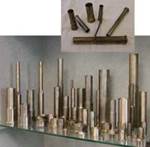
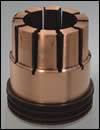
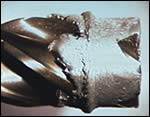
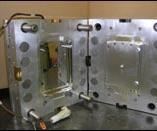







.jpg;maxWidth=300;quality=90)






_300x250 4.png;maxWidth=300;quality=90)






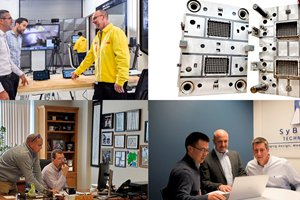
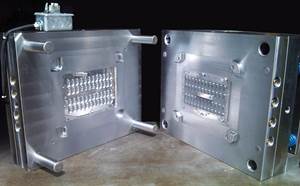

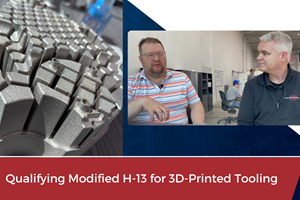
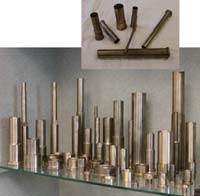

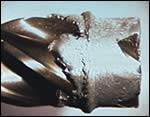
.jpg;maxWidth=970;quality=90)